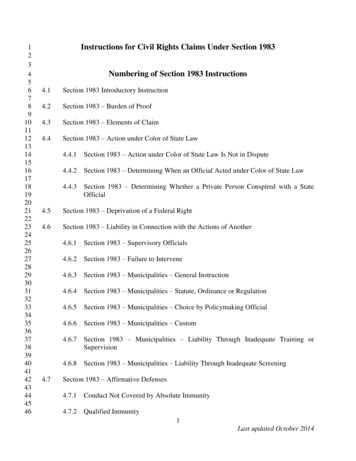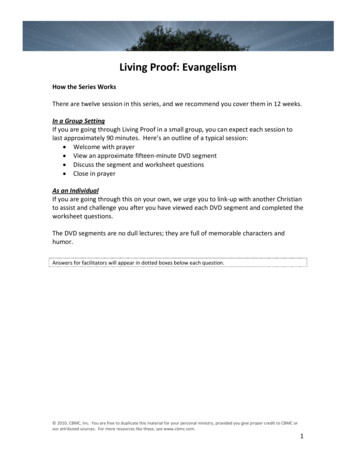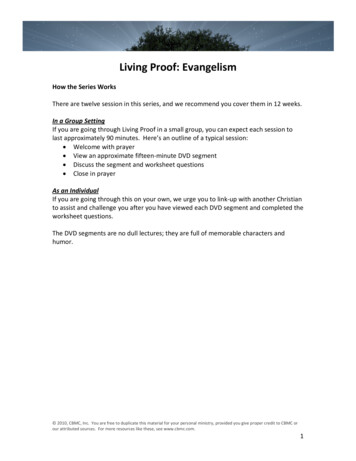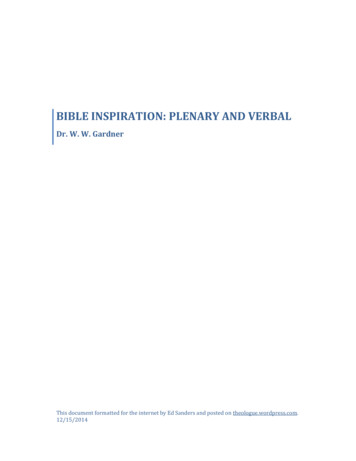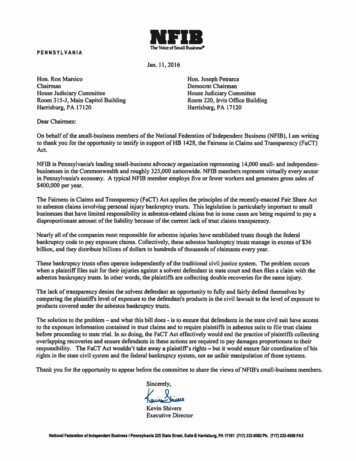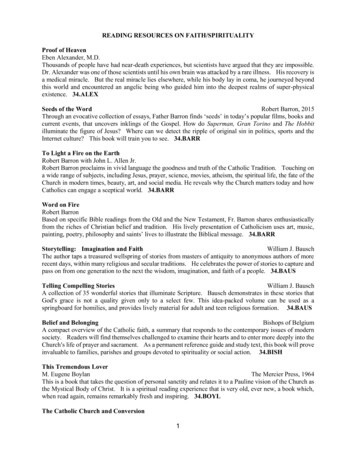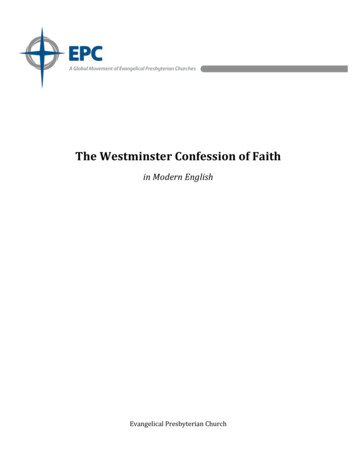
Transcription
Wednesday, January 28th , 2015What proof can you have forknowing someone is dead?1Forensic Science: Fundamentals & Investigations, Chapter 11
Chapter 11 Death: Meaning, Manner,Mechanism, Cause, and TimeBy the end of this chapter you will be able to:ooooDiscuss the definition of deathDistinguish between four manners of death:natural, accidental, suicidal, and homicidalDistinguish between cause, manner, andmechanisms of deathExplain the development of rigor, algor, andlivor mortis following deathAll Rights Reserved South-Western / Cengage Learning 2012, 20092Forensic Science: Fundamentals & Investigations, Chapter 11
Chapter 11 Death: Meaning, Manner,Mechanism, Cause, and TimeBy the end of this chapter you will be able to:ooooo3Estimate the time of deathDescribe the stages of decomposition of acorpseUse evidence on stomach contents to estimatetime of deathUse insect evidence to estimate time of deathExplain how environmental factors can affectthe estimated time of deathForensic Science: Fundamentals & Investigations, Chapter 11
Definition of Deathoooo4Cessation, or end, of lifeIrreversible cessation of blood circulationCessation of all brain activityExperts do not agree on a single definitionForensic Science: Fundamentals & Investigations, Chapter 11
Introductiono5Autolysis—cell breakdownForensic Science: Fundamentals & Investigations, Chapter 11
The Manner of DeathoThe manner of death can be o6Natural, the most imes the manner of death is difficult todetermineForensic Science: Fundamentals & Investigations, Chapter 11
Cause andMechanism of Deathoo7Cause of the death is the reason for thedeathMechanism of death is the specific changein the body that brought about the cessationof lifeForensic Science: Fundamentals & Investigations, Chapter 11
Time of Death—Livor MortisThe Leaden - Color of Deathoo8Lividity—With decomposition, blood seeps downand settles in the lower parts of a bodyRed blood cells turn bluish-purpleForensic Science: Fundamentals & Investigations, Chapter 11
Time of Death—Livor Mortisoooo9Lividity begins about two hours after deathDiscoloration becomes permanent after eighthoursAmbient temperature affects the speed ofdecompositionLividity can determine the position of thebody during the first eight hoursForensic Science: Fundamentals & Investigations, Chapter 11
Time of Death—Rigor MortisThe Rigidity of DeathoWithout oxygen in the blood— ooStarts in the head and expands throughoutAfter about 15 hours— 10Calcium accumulates in the musclesMuscles stiffenMuscle fibers begin to dissolveSoftening beginsForensic Science: Fundamentals & Investigations, Chapter 11
Time of Death—Rigor MortisLive muscle fibersslide back and forthAfter death, musclefibers become lockedin a flexed position11Forensic Science: Fundamentals & Investigations, Chapter 11
Time of Death—Rigor Mortis12ObservationApprox. Time ScaleThe body is at its most rigidstateJust over 2 hoursNo visible signs of rigorLess than 2 hoursor more than 48 hours agoStiffness generallydisappearsAfter 36 hoursForensic Science: Fundamentals & Investigations, Chapter 11
Time of Death—Rigor MortisFactors affecting rigor mortis:oAmbient temperatureoWeight of the bodyType of clothing, or lack of itGeneral health of person at time of deathLevel of physical activity at time of deathSun exposureoooo13Forensic Science: Fundamentals & Investigations, Chapter 11
Time of Death—Algor MortisThe Chill of Deatho Body heat falls after death About 1.5 degrees per hour immediately after death Slowing to less than 1.0 degree per hour after about 12 hours Heat loss is affected by the ambient temperatureoo14Corpse temperature is measured by athermometer inserted into the liverTime of death is expressed as a range of timeForensic Science: Fundamentals & Investigations, Chapter 11
Time of Death—Stomach and Intestinal ContentsState of ContentsTiming of DeathUndigested food present inthe stomachZero to two hours after thelast mealStomach is empty, but food Death occurred at least fourfound in small intestineto six hours after a mealSmall intestine is empty;waste found in largeintestine15Forensic Science: Fundamentals & Investigations, Chapter 11Death occurred 12 or morehours after a meal
Time of Death—Stomach andIntestinalContents16Forensic Science: Fundamentals & Investigations, Chapter 11
Time of Death—Stages of DecompositionChoose: A. Within 2 days. B. After 4 days. C. Within 6-10 days.1.2.3.4.5.6.7.8.9.17Fluids begin to leak from body openings as cell membranesruptureDiscoloration of the faceThe skin sloughs offThe skin blistersGreen and purplish staining from blood decompositionThe corpse bloatsEyeballs and other tissues liquefyThe abdomen swellsMarbling appearance on the skinForensic Science: Fundamentals & Investigations, Chapter 11
3 Forensic Science: Fundamentals & Investigations, Chapter 11 Chapter 11 Death: Meaning, Manner, Mechanism, Cause, and Time By the end of this chapter you will be able to: o Estimate the time of death o Describe the stages of decomposition of a corpse o Use evidence on stomach contents to estimate time of death o Use insect evidence to estimate time of death
